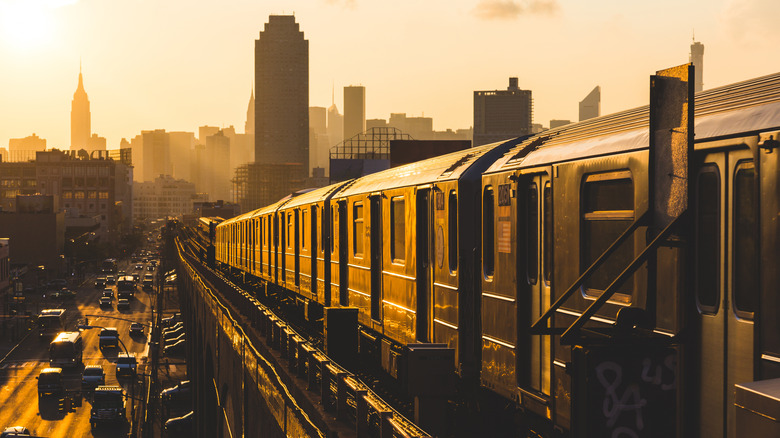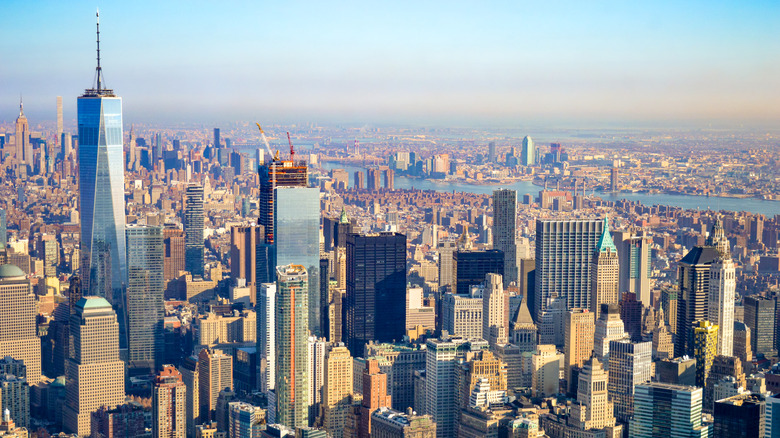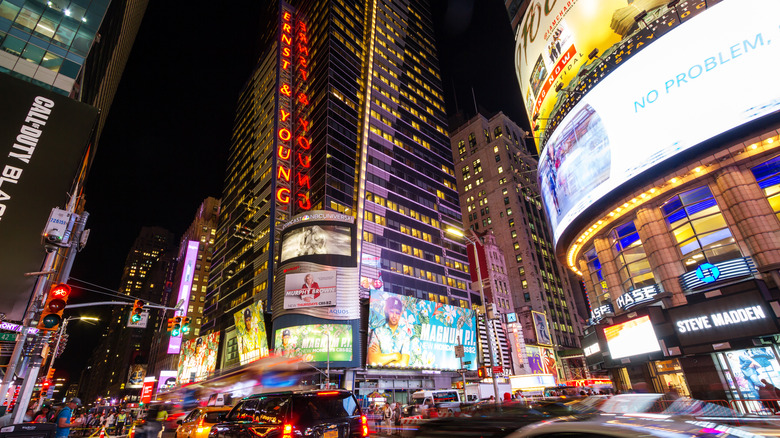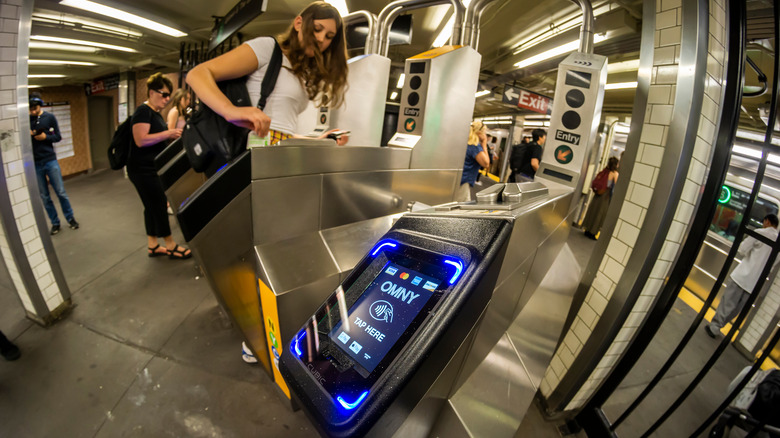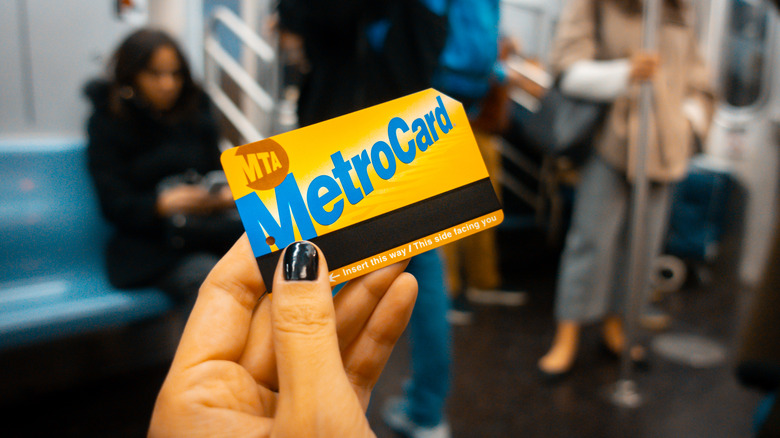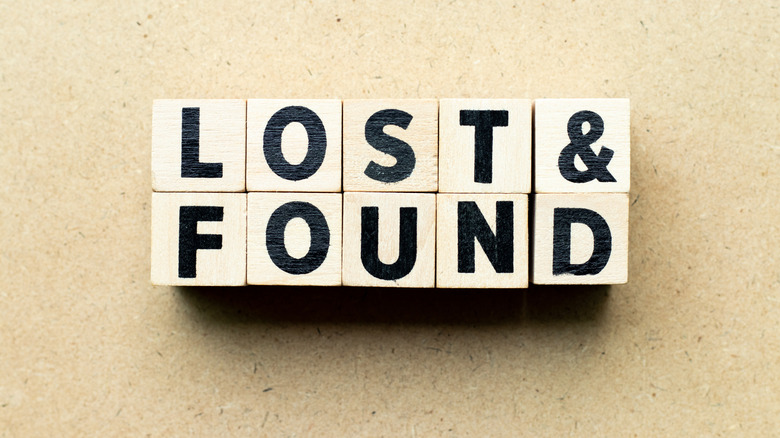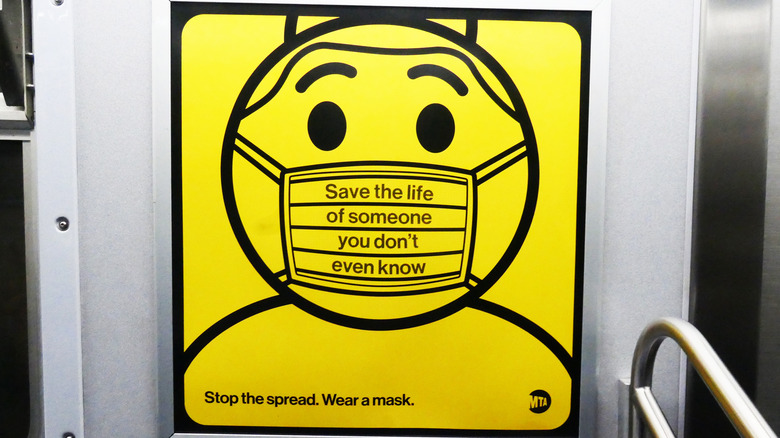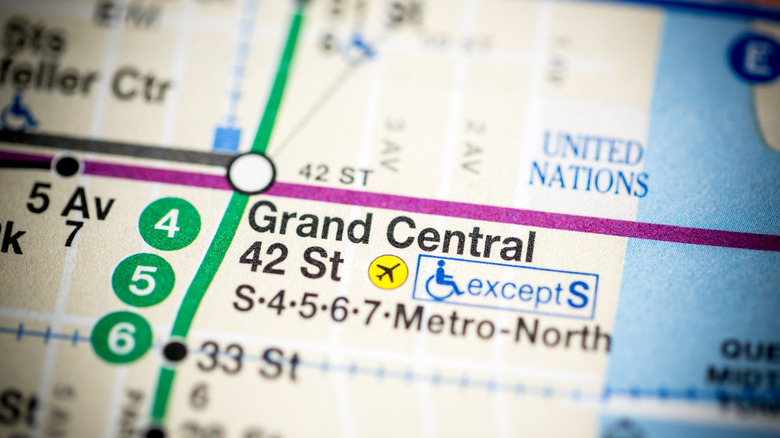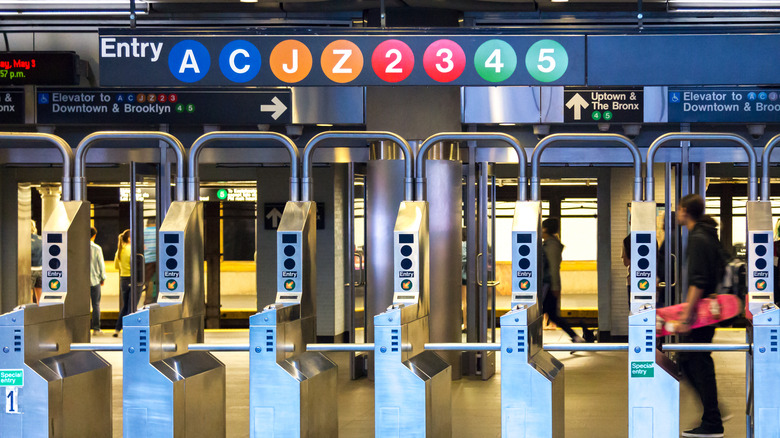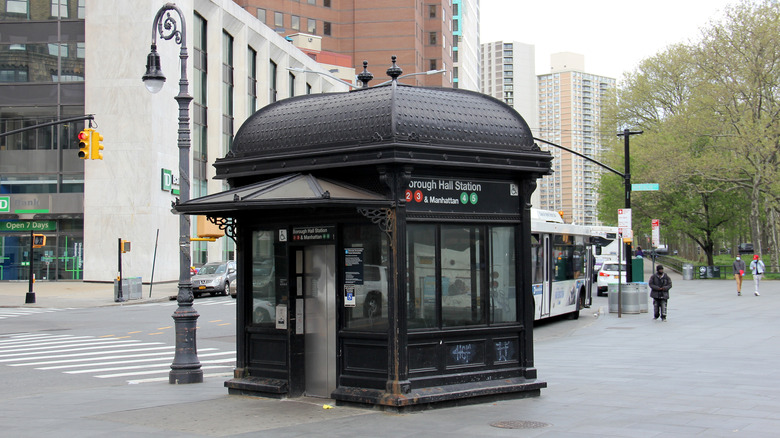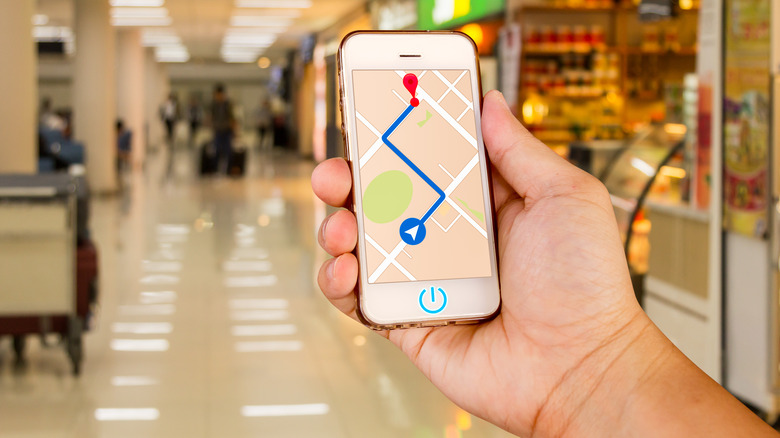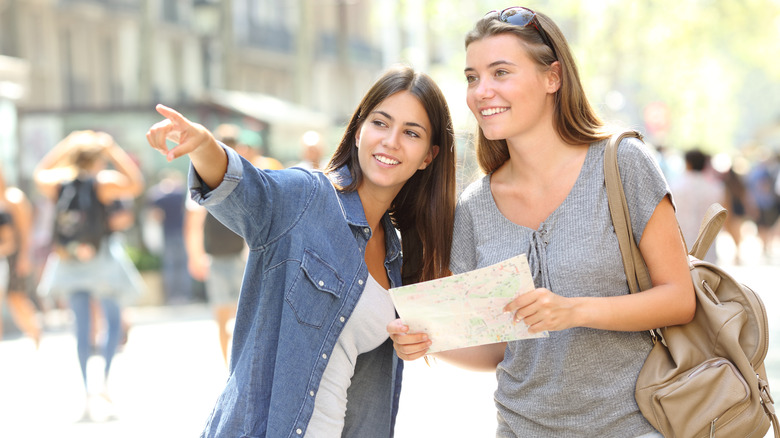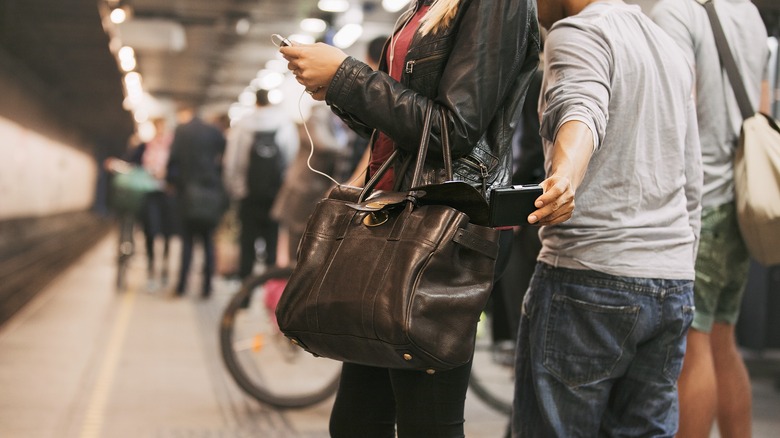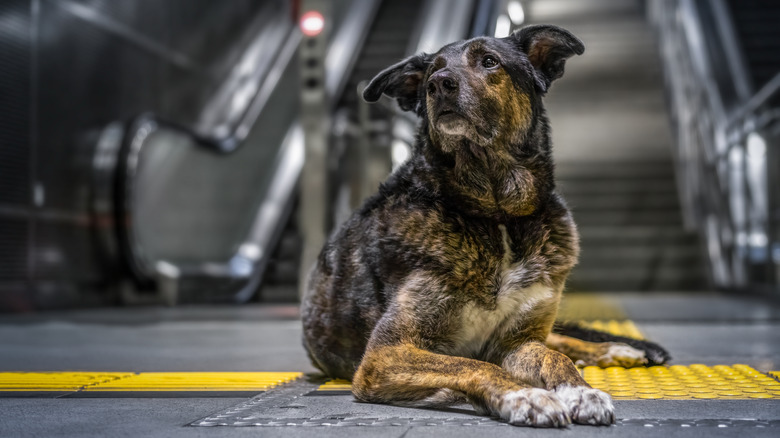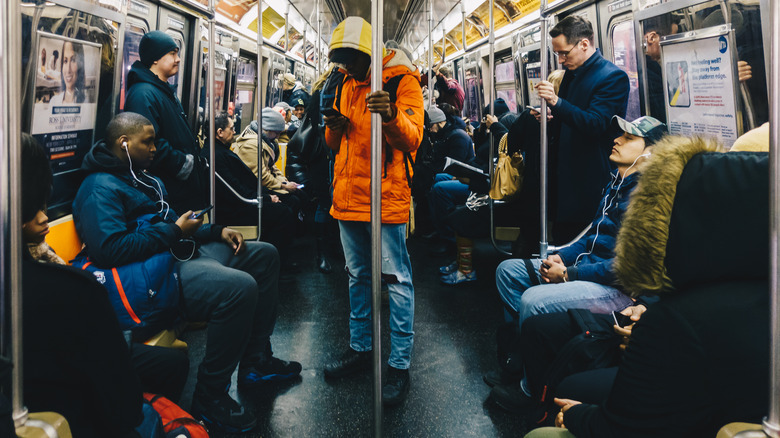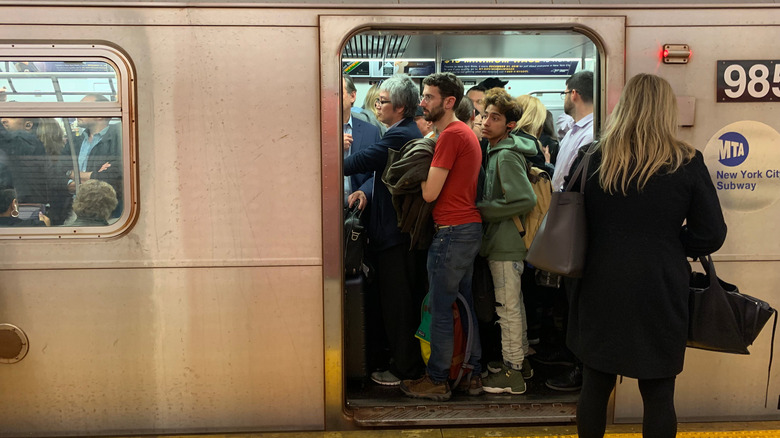The Visitor's Guide To The New York City Subway System
The country's biggest subway system first opened in 1904 and is run by the Metropolitan Transit Authority (MTA). Today it is the fount behind some impressive statistics — 472 stations, more than 660 miles of train track (about the distance between New York and Myrtle Beach, South Carolina), and daily ridership in the millions. Given its scope, it can be a confusing system to navigate, with train lines intersecting in stations that are underground mazes, signs that might look like they are written in a secret code, and dark, dank platforms that don't exactly proclaim "welcome."
But with a little patience, and this handy guide, traveling on the subway in America's most populous city is surprisingly painless. It's also cheap (though not 5 cents, the cost to ride when it first opened, via Museum of the City of New York), no small feat in a city recently ranked as the most expensive in the world by the Economist Intelligence Unit.
Where does the subway go?
The question that visitors should really be asking is where doesn't it go? The vast web of the New York City subway system extends through four of the city's five boroughs, and on a map, the tracks resemble strands of hair billowing in a strong wind (via MTA). The network serves most parts of the Big Apple (when combined with MTA buses, almost all of the city is easy to reach).
The only borough where you won't find the subway is Staten Island, which has its own Staten Island Railway, operated by the MTA and that runs in a gentle arc between the island's northeast and southwest. For the majority of places that travelers will want to go in the city, the subway is the choice mode of public transport, with reliable service, clean cars, and an undeniable street cachet, helped by its appearance on numerous movies and TV shows.
How late does the subway run?
In the city that never sleeps, the subway, fittingly, runs all night, so you can catch a train to where you are staying, or going, at any hour. That said, service at night is less frequent than during the day, not all the lines in the system run 24 hours, and certain subway entrances are closed during the night, a period that the MTA defines as between midnight and 6 a.m. (via MTA).
Given the reduced frequency during the wee hours, and since plenty of people are out at night in the city, subway trains can actually be as busy at night as during the day, depending on the line and location. It's not uncommon to see a train filled with riders returning home after a night shift at work, revelers that want to get back as directly as possible, and assorted stragglers that don't want to spring for a pricey cab ride to the outer boroughs.
Where do I buy tickets?
There are two methods for entry into a subway station. One is by using a razor-thin, credit-card-sized piece of plastic called a MetroCard (sold at vending machines in stations and some shops) that passengers preload with money and then swipe at a turnstile for entry — swipe the card at a smooth, steady pace with the word MetroCard facing you. The other is by a cashless payment system called OMNY, an acronym for One Metro New York, accessed via a smartphone, contactless debit or credit card, smartwatch, or a reloadable OMNY card. Simply tap the OMNY-capable device on a card reader — these are at every subway station in the system (and on all MTA buses) — for entry.
Single rides cost $2.75 for any distance and include a free transfer between the subway and bus within two hours, whether using a MetroCard or OMNY; children under three ride for free. Currently, about 40% of subway riders pay using OMNY (via New York State), but that number will increase as the MetroCard is due to be phased out in 2024, according to an October 2022 MTA Committee Meeting (shown on YouTube.)
Does each person have to get their own MetroCard?
This depends on numbers of travelers and frequency of travel. MetroCards can be loaded at vending machines in two ways — either pay per ride, or for unlimited travel for a seven- or 30-day period. With the first option, riders can swipe the card for up to four people at a time, and a $2.75 fare is deducted from the card after every swipe. MetroCards loaded with the unlimited ride option only allow one rider to swipe at a time, and these cards can't be used again for an 18-minute period. The seven-day unlimited fare is $33, so if you plan to ride the subway more than 12 times in a week, the unlimited option is cost-effective.
MetroCards can be loaded with both types of fare, unlimited and pay per ride, though the unlimited fare option will be used at each swipe until it expires, at which point the card will deduct from the pay-per-ride balance. OMNY systems work on the pay-per-ride basis, except after 12 rides within a seven-day period, the OMNY device won't be charged further, converting it into the unlimited ride alternative. If multiple riders use the same OMNY device, however, only the first tap on each ride will count toward the 12-ride cap (via MTA).
What do I do if I lose my ticket?
MetroCards are distinctive, with a yellow background and bold blue writing across the face, but they are also small, slender, and easily misplaced. Nevertheless, riders should guard their MetroCards the same way that they would a credit card or phone, especially if it's loaded with a hefty balance. If you do lose your ticket — though only if it is a 30-day unlimited ride card — help is available. (For lost seven-day unlimited or pay-per-ride cards, you can kiss that cash goodbye).
Whether the missing 30-day card was lost or stolen, a refund only kicks in if the purchase was made through an MTA vending machine with a debit or credit card. Claims for a lost card can be made online or by calling 511, New York State's transit hotline, and require that the rider provide information regarding the card used to purchase the refill, the date that was done, and the date when the card went missing. Refunds are made to the card used and are pro rata, calculated with a set amount for each day left on the card before it was due to expire (Via MTA).
Do subway riders need to show vaccination status or wear a mask?
Travelers never had to show vaccination status, but for an extended period, masks were mandatory. That requirement was lifted in Fall 2022, making masks optional on all subways and buses. Nevertheless, some riders continue to wear masks on trains, and if you feel more comfortable wearing one, go ahead — fellow passengers won't give you strange looks (subway stations have free masks at ticket booths which, strangely enough, don't sell tickets any more, but are the right place for questions and travel issues).
While masks are no longer required, one holdover from the days of COVID is still very much evident. During the height of the pandemic, riders of the subway would leave the seat next to them empty, a simple way to ensure social distancing, and even today that pattern continues, explaining why people might be standing on trains when there are empty seats. Please respect, and follow, this unspoken arrangement (via MTA).
Why do different trains sometimes have the same color line?
Trains on the New York City subway system share sections of their routes with other trains and this is noted on the map by lines possessing the same color. An example is the N, Q, R, and W trains, all assigned a yellow line. These trains might have stops in common, but they also vary in their start and end points, and some also skip stations.
Trains that share lines are often divided into Express and Local trains, with the former making select stops along the line, and the latter stopping at all stations. Furthermore, some trains can be Local in one borough, but Express in another borough (like the Q, which travels Express in Manhattan, but Local in Brooklyn). This can be as confusing as it sounds, so the best way to confirm if a train stops where you want to go is to look at a map and see if the train line is listed next to your destination station (via MTA).
What's the best way to ride the train and know where to go?
The simplest way to plot your route is to look at the subway map — this can be downloaded from the MTA website, there are copies of the map on the wall of every subway station, and free paper copies are available from the ticket booth — and identify your start and end points. From there you simply need to understand a few terms to ensure you end up on the proper platform at the station. A sign for Uptown denotes a train usually headed in a northern direction, and conversely Downtown means southern. At most stations, you can get to either platform from a single entry point, but sometimes platforms for Uptown and Downtown trains have separate turnstiles, and if you enter the wrong one, you'll need to exit and pay for another fare to get to the right one.
For travel between boroughs, it's easiest to look for signs in the station that display the borough where you are heading. For transfer to another train line within a station, when you exit the train, follow the signs that are on the platform; these signs are sometimes at the other end of the platform, so if you don't see them at first, walk a little. And when waiting for the train on a platform, always stand behind the yellow strips near the train tracks, a bumpy safety feature installed to help the visually impaired (via MTA).
Can I take the subway if I have mobility issues?
As of Summer 2022, only about a quarter of subway stations were accessible for people with disabilities, though the MTA announcement in June 2022 declared a full-scale upgrade in the system in this respect. Frankly speaking, the New York City is populated by stairs, everywhere you go, everywhere you look, from the stairs that lead down to the turnstiles, to the steps that link the ticketing area to the platforms. It's not uncommon to see parents lugging their strollers (with children in them) up stairs due to the lack of options available.
Elevators are a feature of stations, but most regular travelers on the subway are now fully accustomed to using leg power to get down to the platforms and up to the streets. But that shouldn't dissuade passengers with mobility issues; a full list of currently accessible stations compiled by the MTA can help with the planning of your trip.
Is there an app that can take the guesswork out of my subway trip?
There are a number of free applications that can seamlessly plot your route from A to B. Among them are Google Maps, Citymapper, and Transit. For riders that prefer to go straight to the source, the MTA developed app, called MYmta and available on Apple and Android, can calculate your route to and from specific street addresses, showing which subways to take and the estimated time of the journey. It also offers real-time data on when a train will arrive at a particular station.
A trip planner, on the MTA website, also allows passengers to map out their journey with the option to restrict transportation options to only the subway. For travel on weekend, the MTA app and site are useful for tracking updates to each line, especially since this is when technicians and engineers often conduct work on the system, leading to delays, cancellations, and re-routing of trains (via MTA).
What should I do if I get lost?
It's clear by now that the subway can be bewildering and not paying attention to signs can easily send a passenger in the wrong direction. Most times, with a quick look at a map (there's one inside every car on every subway line), it's not hard to figure out where you went wrong, an error that you can usually remedy by crossing over to a platform for the train that goes in the opposite direction. But if you really can't fathom where you are, or how to get where you are going, simply ask someone at the ticket booth, at the platform or on the train.
Contrary to popular belief, New Yorkers aren't crazed delinquents just waiting to steal all your belongings or to verbally rip you to shreds. According to a survey by Streeteasy, a sizeable chunk of residents here, especially those that own homes, are neighborly, meaning they have no issues interacting with the people around them. Give it a try, you might be pleasantly surprised!
Is the subway safe?
In one word, yes. This is a city of 8 million people — more than double the number of residents of the next largest U.S. city, Los Angeles (via World Population Review) — where vast inequalities of wealth exist, so crime is unavoidable. And while felonies on the subway in 2022 have increased compared with 2021 (when ridership was much lower than it is now, which goes a long way to explaining the statistics), the rate in November 2022 has actually dropped from a year earlier, according to MTA CEO Janno Lieber.
Visitors should understand that the vast majority of people riding the subway are taking it to get from one part of the city to another as peacefully, efficiently, and cost effectively as possible. They aren't looking for trouble, they are just going about their day, and any portrayals of the subway system as a breeding ground for degenerates, and where is crime is rampant, are just not accurate. Just be aware of your belongings, as you would any time that you leave home.
Can I bring my pet on the subway?
Only service animals are allowed on the subway, and other animals (pets, especially those that play a key role in emotional support) are supposed to be enclosed in carriers when taken on the train. That's the official rule, but ever since the pandemic, these guidelines are no longer hard or fast.
Riders will often see a passenger with a pooch — usually smaller breeds — boarding a subway car, sitting on their laps, or curled up at their feet, as they travel around the city, and other riders rarely object as long as the animal isn't a nuisance. If you plan to bring your dog on the train, always keep it leashed and try to find a seat or space at either end of the subway car, where there is less foot traffic entering and exiting at each station, and less opportunity for anyone to portray your beloved pet as a barbaric pest (via MTA).
What is the proper etiquette aboard a train?
New Yorkers might seem like a fascinating, eclectically dressed bunch, but that's no reason to stare at them. Avoid making eye contact, intentional or unintentional, on the platform and especially aboard the train — the easiest way is to bring something to read on the train, or to stare at the advertisement boards above the windows. When a train arrives, always step to the side of the doors to let passengers out first, and when entering, try to move toward the center space between sets of doors, so you aren't blocking the doorway. Hold on to the poles or rails above the seats when standing, trains make sudden stops and starts and you don't want to fall.
Inside a packed train, if are right by the door when the train arrives at a station, step out of the door and to the side to let the passengers out and then go back in. When standing in the train, always take your backpack off and place it between your feet (keep it close by; most likely nothing will happen, but better safe than sorry). And try not to eat anything that has strong, pungent odors (fried food, spicy dishes): these smells might be manna to your nose, but you're not the only one onboard, and New Yorkers can be very vocal when they are unhappy. Finally, when riding up and down a station escalator, always stand to the right. Thrillist has a humorous take on some dos and don'ts.
When is the best time to ride a train?
While you can't always plan your schedule to jibe with the times when the trains are less busy, it's best to avoid the rush hours, usually between 7 a.m. – 9 a.m. and 4 p.m.-7 p.m. During these windows, children and adults are shuttling between home and school and work, and trains can get as packed as a tin of pickled sardines, which doesn't usually make for a pleasant riding experience. The passenger load is markedly lighter off-peak, and riders can generally find a seat outside these hours — a boon if you've been pounding the pavement for hours.
It's important to reiterate a point made earlier, that some trains don't run all the time; the B train, for instance, which goes from a coastal neighborhood of South Brooklyn up to Yankee Stadium and beyond in the Bronx, only runs on weekdays and finishes service around 9 p.m. Signs on the platform usually detail when trains do and don't operate (via MTA). Happy travels!
